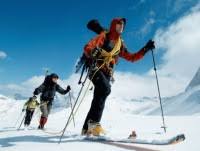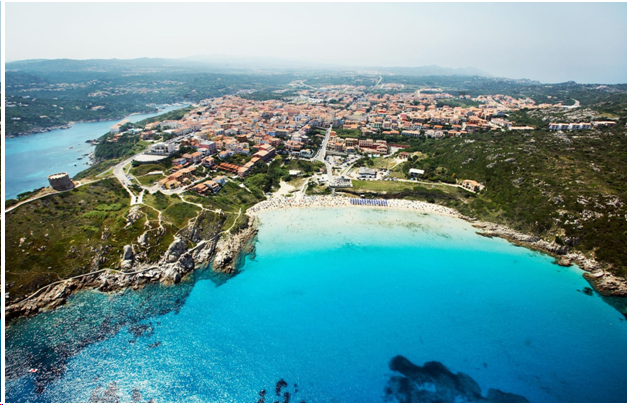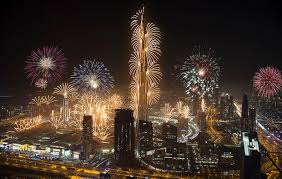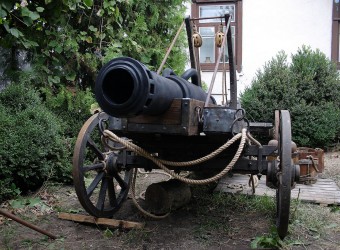Ski tourism
 An exciting type of outdoor activity is ski tourism. In the conditions of a ski trip, a tourist is in pure frosty air for a long time. Uniform muscular load, smooth gliding, the beauty of winter nature, a quick change of impressions, communication with a team of tourists – all this gives a big charge of positive emotions.
An exciting type of outdoor activity is ski tourism. In the conditions of a ski trip, a tourist is in pure frosty air for a long time. Uniform muscular load, smooth gliding, the beauty of winter nature, a quick change of impressions, communication with a team of tourists – all this gives a big charge of positive emotions.
Ski trip
Ski tourism The muscles of the arms, legs, abdomen, and back are actively involved in the work of a tourist-skier. Therefore, skiing is an excellent means of general physical training, which will help to strengthen health, become stronger, stronger, tougher.
With good gliding, even a beginner skier can walk at a speed of 6-8 km / h without any difficulties.
However, it should be borne in mind that weekend skiing is different from an ordinary skiing trip, and preparation for them should be more thorough. In the conditions of a winter hike, tourists are exposed to low temperatures for quite a long time (6-8 hours). The group’s path also passes through open, not protected by forest areas, with a strong wind and snowy virgin land. On the way, bushes, rugged terrain, forest debris, snowdrifts can meet. With all this in mind, you should choose camping equipment and gear.
We select and prepare skis for a hike
Winter in the South Urals
ski tourism The basic requirement for skiing is durability, lightness. In the conditions of one-day trips, if the route also goes along flat or slightly rough terrain and dense snow, it is better to use ski skis with rigid mounts, with a handle that presses the boot welt to metal pins. For forest routes and when driving over rough terrain, on loose snow and off-road, it is better to have “Tourist” skis, they are a bit wider than walking skis, they are much stronger and do not fall deep in fresh snow. To make it easy for the skier to control his movement in the forest and on rough terrain, skis should not be too long.
Anchorages are selected depending on the conditions of the trip and the type of ski. On ordinary skiing it is better to put hard mounts. They are lightweight, comfortable and reliable. For multi-day difficult trips, welded hard mounts are not suitable. On such routes, semi-rigid universal mounts with metal springs should be used. The boot edge in such mounts is fixed in the cheeks. Such mounts allow you to go hiking in almost any shoe: ski boots, work boots, hiking boots, boots. To prevent snow from sticking under the heel of the boot, rubber pads, preferably made of microporous rubber 2–3 mm thick, are nailed to the ski loading area.
Ski poles are best made of duralumin tubes of the Moscow type.
Skiing Before skiing, skis must be tarred with a special resin. Resin protects the skis from swelling under the influence of moisture, strengthens the wood, improves the connection of ointments with ski.
In case of breakage of skis, anchorages, poles, it is necessary to learn how to repair them. To do this, the group must have a repair kit of tools, materials, spare parts: pliers, a screwdriver, a file, an awl, a light hammer, scissors, a ski mount kit, rings for sticks, a spare ski, plywood, aluminum, tin plates for linings, copper wire and steel, nails, screws, kiper tape.
Turits-skier clothes and shoes
The best shoe option is hiking boots, which should be one or two sizes larger than the one you wear. They should be impregnated with grease to impart water-repellent properties. Shoes should be worn on warm coarse wool socks (1-2 pairs), over which old nylon stockings are worn (to protect socks from quick rubbing).
In multi-day hiking, it is recommended to wear shoe covers – anti-snow stockings. They keep dry shoes, socks and the lower part of the trousers when moving in deep loose snow. The most rational form of shoe covers in the form of a rectangular bag. Sew shoe covers made of thin tarpaulin or kapron parachute fabric.
To protect against wind and snowstorms, masks of flannel size of 20X20 cm with holes for the eyes and mouth are used.
Clothing for tourism should be windproof, warm, light, not restricting movements. Woolen underwear is recommended, trousers are made of thin tarpaulin or kapron, Bologna; shirt is better flannel. When driving, dressing should not be very warm so as not to sweat, but a sweatshirt or lightweight, non-blown jacket should be worn over the sweater. A ski cap is on your head, and even better, a helmet cap, which can be lowered to the face and neck during strong winds, which prevents frostbite well. Woolen mittens embedded in durable canvas gloves will protect your hands from frost and wind.
You should take spare warm socks, warm mittens, a sweater, a jacket with you. The jacket is useful in halts, so as not to cool after the transition. Warm clothes will help out in case of sudden bad weather.



